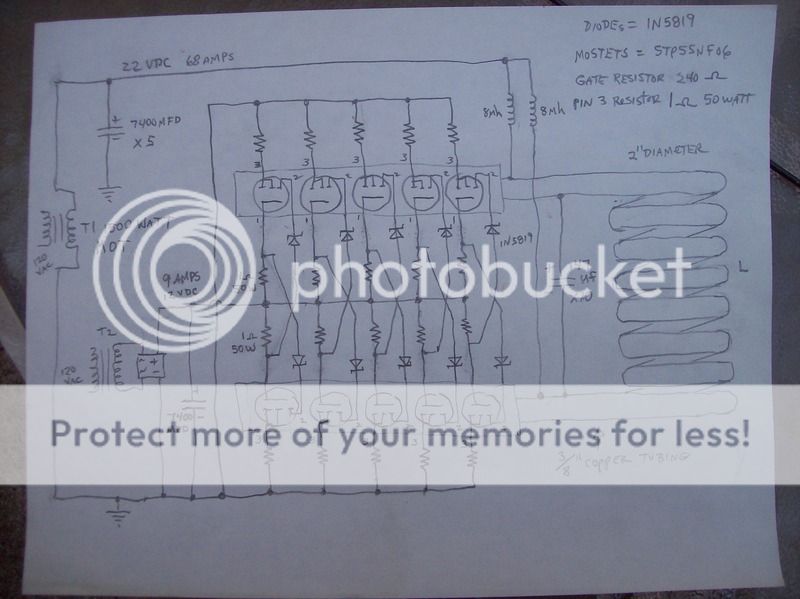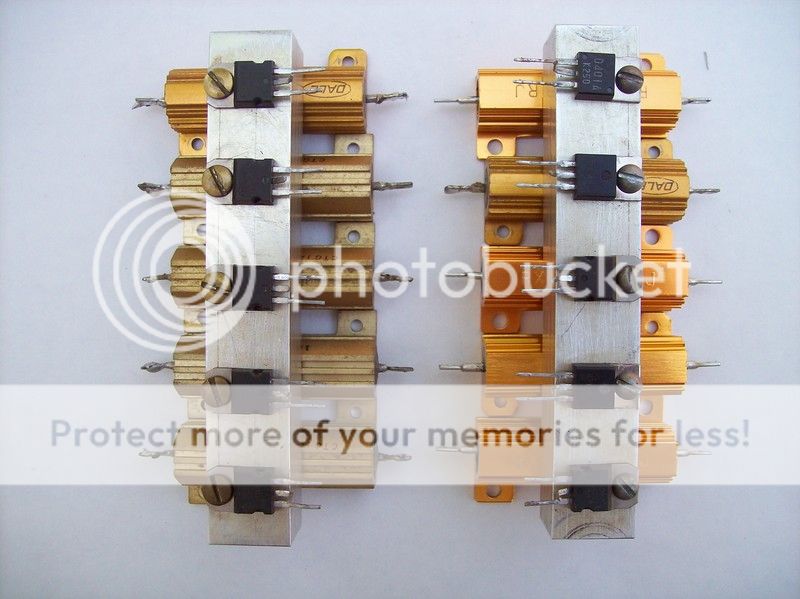My original circuit was 2 mosfets running on 22 VDC 36 amps. The new circuit used 10 mosfets 5 in parallel on each side. There will be a 1 ohm 50 watt resistor on each mosfet to limit through each mosfet to 22 amps. The aluminum blocks are drilled through taped 1/8 npt on both ends for cooling. Cooling liquid will be high voltage transformer oil. The LC coil size has not been determined yet the plan is 2" diameter with enough turns to limit total current in the circuit to about 65 amps for now. I am going to hook up 2 mosfets at a time once I have it running on 2 then add 2 more the 2 more and so on. 5 mosfets per side is over kill just to keep current lower in each mosfet. The 1 ohm resistors are safety to limit current to prevent a chain reaction just incase 1 mosfet burns up or shorts out. I might only hook up 6 mosfets total for now the transformer is only 68 amps. The gate circuit has its own transformers and power supply circuit so it should not be effected by what the other power supply circuit is doing. The power resistors will have cooling too and so will all 8 power supply 250 amp diodes. I have some 1 ohm and 2 ohm 800 watt resistors i can use for protection to get this circuit going then remove them later. I see I made a mistake on the 22 volt power supply there is no rectifier in the drawing. Give me some help have I made any mistakes?




Last edited:


